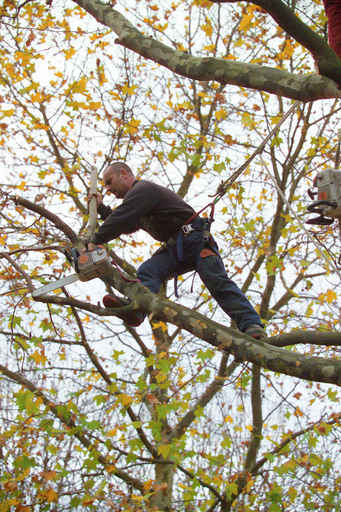Pruning and Trimming your Trees
JPC Tree Care provides outstanding tree pruning and tree trimming services in the Chicago area performed by experienced staff. Our certified arborist will be happy to walk your property and discuss short and long term tree pruning and tree trimming programs with you.
Elevating and Thinning your Trees
Your trees may need to be elevated and thinned. We can prune the trees back or remove them so that they do not interfere with your house or structure.
CROWN RAISING is the practice of removing branches from the bottom of the crown of a tree to provide clearance for residents, vehicles, buildings, or sunlight. Also, removing lower branches on white pines can prevent blister rust. For street trees the minimum clearance is often specified by municipal ordinance. After pruning, the ratio of the living crown to total tree height should be at least two-thirds (e.g., a 36 ft. tree should have living branches on at least the upper 24 ft.).
CROWN THINNING, primarily for hardwoods, is the selective removal of branches to increase light penetration and air movement throughout the crown of a tree. The intent is to maintain or develop a tree’s structure and form.

Maintaining Healthy Trees
Do your trees need general clean-up? Pruning decreases wind resistance and reduces the risk of mechanical stress leading to structural failure. It also increases air circulation and helps to prevent disease and insect problems. We can prune out dead, hazardous and crossing tree limbs to keep your trees growing strong and healthy.
We never engage in the destructive practices of Topping and Tipping; sometimes called ‘Top Hatting’. These practices invariably result in the development of epicormic sprouts or in the death of the cut branch back to the next lateral branch below. These epicormic sprouts are weakly attached to the stem and eventually will be supported by a decaying branch.
When to Trim Trees
Pruning and Trimming your trees needs to be done at the ‘right’ time to keep them healthy and beautiful. Removal of dead, dying, diseased, interfering and obstructive limbs is the best method of maintaining tree health and appearance and can be done at any time. However, different species need trimming at different times of the year in order to promote healthy growth. Some communities have codes preventing the pruning of certain types of trees at detrimental times of the year.
FLOWERING TREES – Most flowering trees set their blossoms the year before they bloom. Therefore, they won’t bloom if these flower buds are trimmed off the tree. The best rule is to always trim flowering trees within 3 weeks of when they finish blooming. That should prevent you from inadvertently removing buds containing next year’s flowers.
MAPLES – Maples trimmed at certain times of the year will “bleed” or drip from the pruning cuts. Bleeding is most likely to occur when Maples are pruned in the seasons just before and right after winter. Studies indicate that “bleeding” doesn’t hurt the tree, so it becomes more of a cosmetic issue. If you want to prune Maples without bleeding, it must be pruned when it is fully dormant in the middle of winter (Jan or Feb) or during late spring (June) or summer (July, Aug, Sept) when it’s in full leaf.
DOGWOODS – If you trim Dogwoods in April or May, it will make them more susceptible to the dogwood borer. This insect severely damages the vascular system of the tree after boring into the trunk.
OAKS – Oaks should be not be trimmed from April thru October, due to the prevalence of Oak Wilt disease pathogens during that time frame.